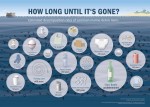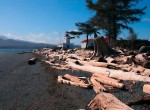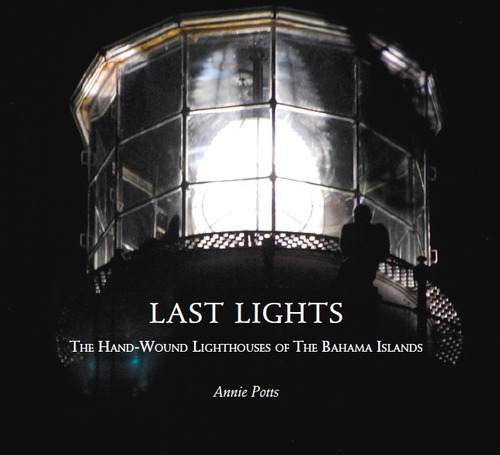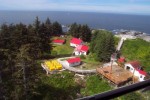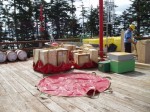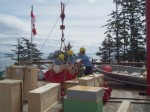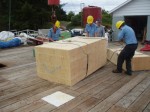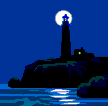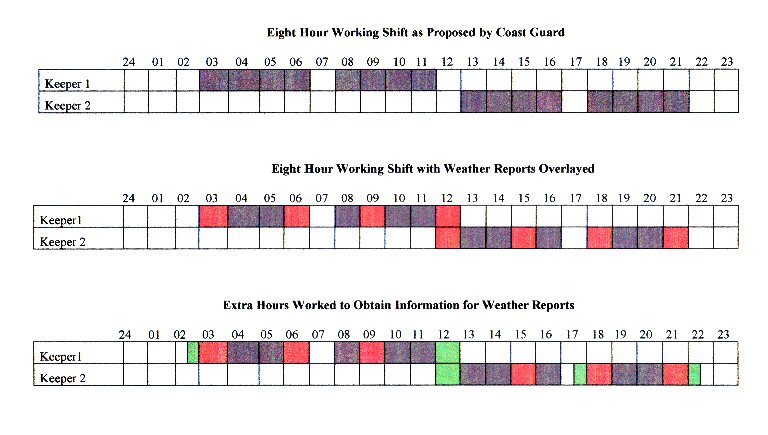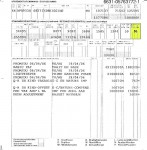 I lived thirty-two years on the lighthouses bordering on the Pacific Ocean. As a lighthouse keeper, I was also aware of the ocean as a living habitat that should be protected. We voluntarily reported oil spills, garbage, etc. For me it was a beautiful place, but I saw what man could do to the oceans in just a short period.
I lived thirty-two years on the lighthouses bordering on the Pacific Ocean. As a lighthouse keeper, I was also aware of the ocean as a living habitat that should be protected. We voluntarily reported oil spills, garbage, etc. For me it was a beautiful place, but I saw what man could do to the oceans in just a short period.
One prime example which I will never forget was back in the 1970s when I was at Quatsino lighthouse (aka Kains Island) where a mining firm near Port Alice was given government permission to dump mine tailings five (5) kilometers off the coast.
If the weather was bad, they only went as far as the entrance to the sound, maybe one (1) kilometer, and dumped their barge-load of rock garbage.
My crystal clear fishing water around the lighthouse turned from 40 foot visibility to a murky brown colour with a visibility of about one (1) foot because of the tailings.
 The oceans are not a garbage dump! Please watch Chris Jordan’s trailer video below and then read the news articles.
The oceans are not a garbage dump! Please watch Chris Jordan’s trailer video below and then read the news articles.
We humans are ruining the oceans of the world!
The complete video can be found on the Midway website
Many more similar videos can be found here on Youtube.

***************************.

 October 03, 2012 – Expedition Embarks To Study Effects Of The Great Pacific Garbage Patch
October 03, 2012 – Expedition Embarks To Study Effects Of The Great Pacific Garbage Patch
The Robert C. Seamans, a tall ship owned and operated by Sea Education Association (SEA) will leave port October 3, 2012, on a research expedition. The journey is dedicated to examining the effects of plastic marine debris in the ocean ecosystem, including debris generated by the 2011 Japanese tsunami.
http://www.repost.us/article-preview/#!hash=25493d1f370b96693e04011b50db7bd
 October 02, 2012 – Plastics at sea – North Pacific Expedition
October 02, 2012 – Plastics at sea – North Pacific Expedition
An area of plastic debris was first observed in the North Atlantic Ocean in the early 1970s, but in recent years, a similar area of plastic debris in the Pacific Ocean has received the most media attention. Sea Education Association (SEA) has been studying both debris fields – in the North Atlantic for the past 25 years, and in the North Pacific the past eight. Click here…
August 12, 2012 –Ocean plastic an ugly threat
Yet the biggest contamination problem in the Pacific Ocean existed long before the 2011 tsunami. It’s summed up in that word from The Graduate: “Plastics.”
Mary Crowley, founder of the Ocean Voyages Institute, a U.S.-based environmental group, says the tsunami debris poses a significant risk to the ocean, but it pales in comparison with the vast amount of debris already floating in the ocean. Most of that debris is plastic and most of it comes from this side of the Pacific.
August 07, 2012 – Ship Tracking Tsunami Debris, Ocean Trash Makes Stop in BC
Marine litter a growing problem, but cleanup plans are in the works
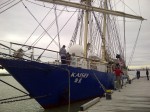 The tall ship Kaisei, seen here docked in Richmond after several weeks of tracking debris and gathering research on the Great Pacific Patch and the Japanese tsunami. The findings will be presented at the Richmond Maritime Festival Aug. 10-12. (Courtesy of City of Richmond)
The tall ship Kaisei, seen here docked in Richmond after several weeks of tracking debris and gathering research on the Great Pacific Patch and the Japanese tsunami. The findings will be presented at the Richmond Maritime Festival Aug. 10-12. (Courtesy of City of Richmond)
July 24, 2012 – Litter From City Streets Ends up on Beaches
 Trash falls out of a full garbage bin on Seventh Avenue in Midtown Manhattan, July 24, 2012. According to New York City environmental protection commissioner, there is a chance that trash laying in the city’s streets could end up on New York’s beaches. (Benjamin Chasteen/The Epoch Times)
Trash falls out of a full garbage bin on Seventh Avenue in Midtown Manhattan, July 24, 2012. According to New York City environmental protection commissioner, there is a chance that trash laying in the city’s streets could end up on New York’s beaches. (Benjamin Chasteen/The Epoch Times)
June 12, 2012 – Five Global Companies Pledge Cooperation on Bioplastic
June 12, 2012 – Kaisei sets sail for Steveston’s Ships to Shore festival Kaisei, a Japanese name roughly interpreted as “Ocean Planet,” has served as the iconic vessel behind research expeditions of Project Kaisei, a group that formed in 2008 to stem the flow of plastic and marine debris into the Pacific Ocean.
June 09, 2012 – Great Pacific Garbage Patch Is A Bigger Threat Than Tsunami Debris
June 05, 2012 – If the Sea Was a Child: In Honor of World Oceans Day
May 28, 2012 – Canada’s mass firing of ocean scientists brings ‘silent summer’
May 23, 2012 – UVic PhD student shocked by fisheries job cuts in North Saanich
May 23, 2012 – Help with first wave of tsunami debris
May 22, 2012 – Research Finds World’s Oceans ‘Plasticized’
May 17, 2012 – Microplastics endanger ocean health
– Big rise in North Pacific plastic waste
May 28, 2012 – Canada’s mass firing of ocean scientists brings ‘silent summer’
Canada is dismantling the nation’s entire ocean contaminants program as part of massive layoffs at the Department of Fisheries and Oceans.
Many scientists say the purpose of the move by the Canadian government is not just cost-cutting but to eliminate environmental rules and protect the oil and gas industry.
May 23, 2012 – UVic PhD student shocked by fisheries job cuts in North Saanich
The 29-year-old student is still in shock that her mentor, Canada’s only marine mammal toxicologist at the Institute of Ocean Sciences on Vancouver Island, is losing his job as the federal government cuts almost all employees who monitor ocean pollution across Canada.
May 23, 2012 – Help with first wave of tsunami debris
Although the Japan Tsunami has created unprecedented amounts of ocean trash, marine debris from foreign and domestic sources has been washing up on the Alaskan coast for a long time. Most of this debris is caused by human choices. The solution to the global problem of marine debris is changing our habits and the way we dispose of our waste, and the first step towards that solution is creating an awareness of the problem.
May 22, 2012 – Research Finds World’s Oceans ‘Plasticized’
A marine expedition of environmentalists has confirmed the bad news it feared — the “Great Pacific Garbage Patch” extends even further than previously known.
May 17, 2012 – Microplastics endanger ocean health
Tiny pieces of plastic contaminate almost every sea in the world. Now scientists have found that marine creatures like fish and birds are eating this microscopic waste, which may be harming their health.
May 09, 2012 – Big rise in North Pacific plastic waste
The quantity of small plastic fragments floating in the north-east Pacific Ocean has increased a hundred fold over the past 40 years.
************************
Related Websites (in no particular order):
